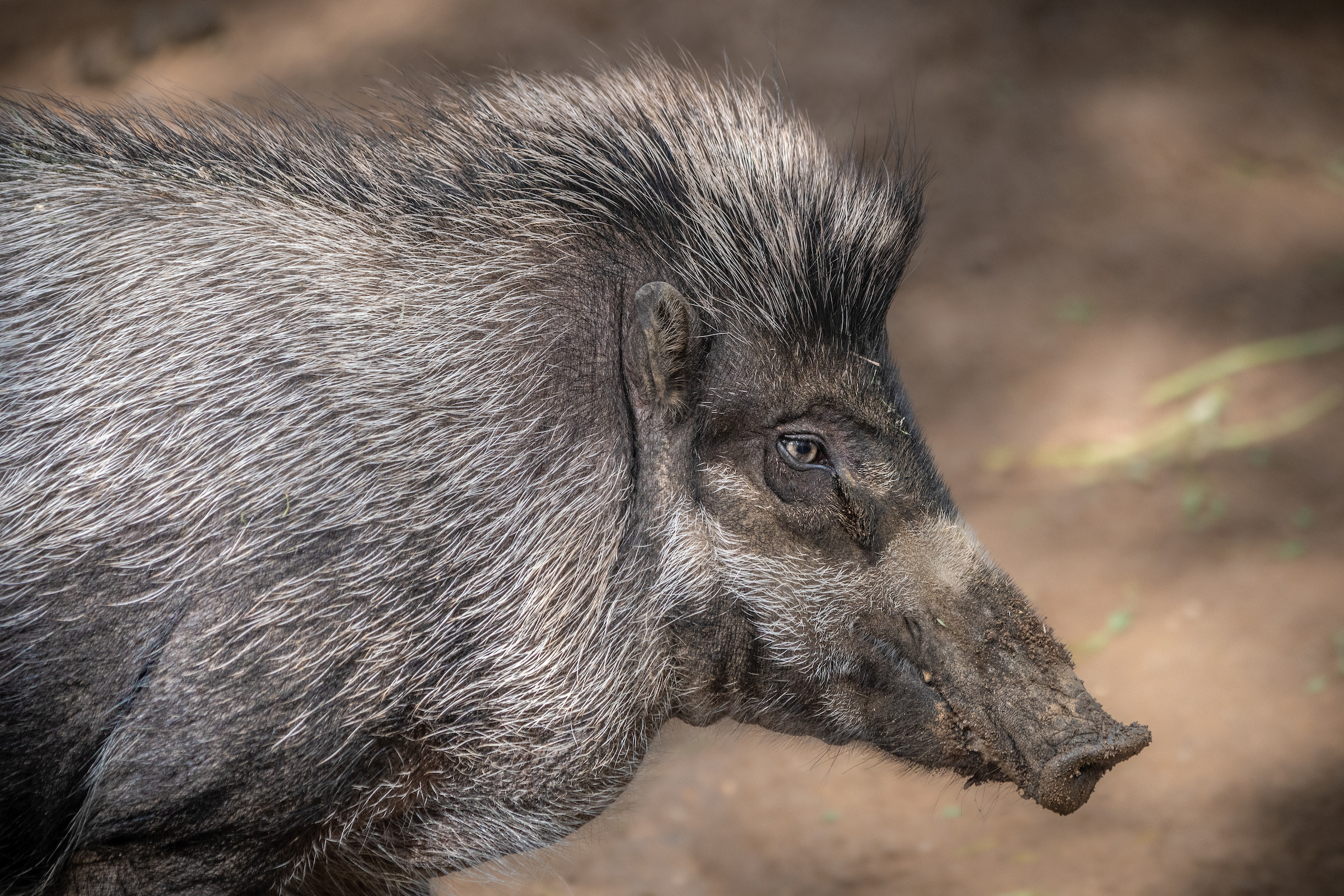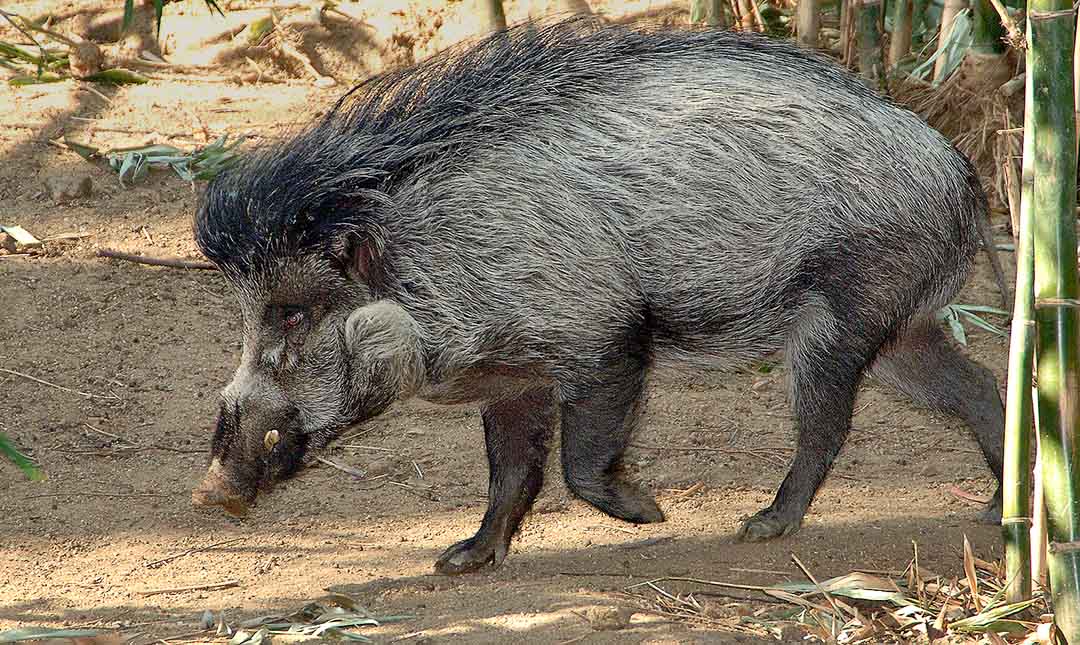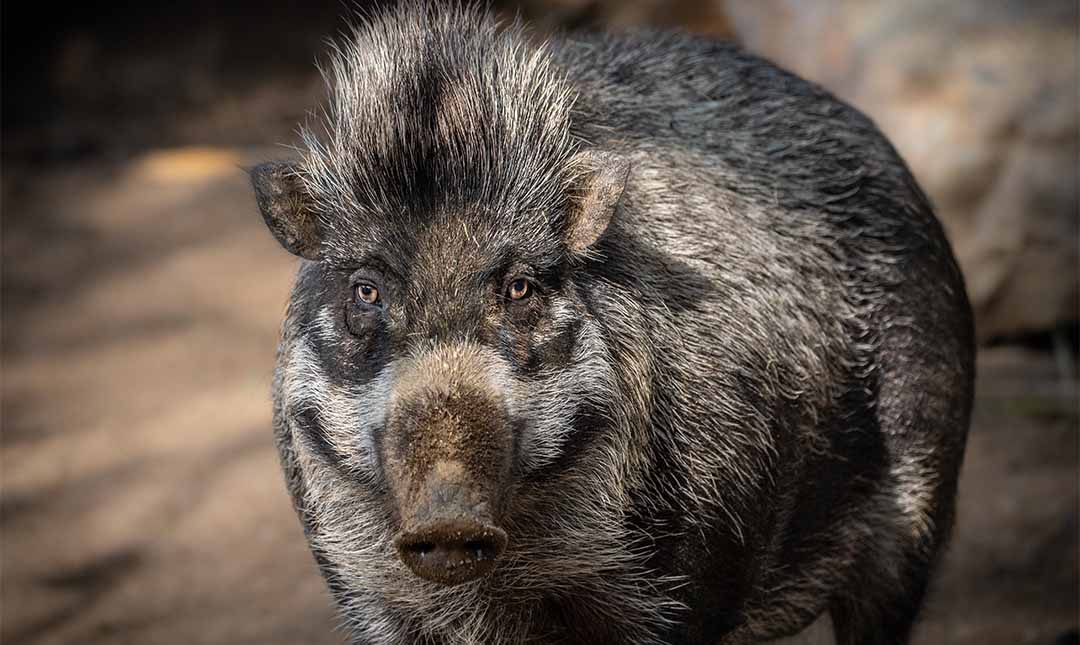About
Visayan warty pigs are the rock stars of the pig world. During the breeding season, males (boars) grow a nine-inch-long, coarse, floppy mane that rivals Elvis Presley’s famous pompadour. The females (sows) seem to find this feature irresistible. In addition to the seasonal mane, males grow three pairs of warty growths on their faces and like most wild pigs grow large tusks that are used to spar for mating rights. It’s thought that warts provide protection from rivals’ tusks during these competitions. Both genders possess a prominent line of white fur across the snout. Sows are pregnant for about four months, after which between one and four striped piglets are born. Piglets are independent at about six months of age. Visayan warty pigs live in groups called sounders which consist of an adult male, several females, and their offspring. Unattached males may live on their own or in a bachelor group.
These pigs indulge in mud baths during the day to cool down and forage when temperatures are cooler at dawn, dusk, or during the night. Pigs have an excellent sense of smell and can locate food many feet underground. Their long, mobile, disk-like snouts help them root around in the soil for their favorite foods, which include fruit, mushrooms, and yams.
Visayan warty pigs are one of the most endangered wild pig species. They survive in only 5 percent of their original range. In the wild, they live in small, fragmented populations on two Philippine islands. Threats include habitat destruction, population fragmentation, and hunting. Domestic pig populations also pose a threat by interbreeding with wild Visayan warty pigs, producing genetically hybridized offspring. The Philippine government has established rescue and breeding centers to help preserve these beautiful animals. Regulations are in place, but enforcement is difficult.
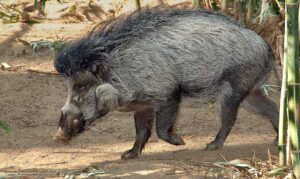
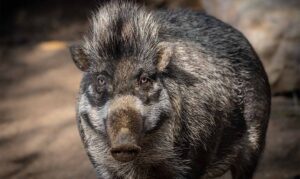
Status
Visayan warty pigs are considered critically endangered. The Philippine government has established rescue and breeding centers to help preserve these animals. Regulations are in place but enforcement is difficult. The Los Angeles Zoo has been participating in an international captive breeding program since 1995 to help increase their numbers.
Habitat
Visayan warty pigs presently live on two Visayan islands located in the central Philippines: Panay Island and Negros Island. They are found in dense, tropical rainforests where rainfall may reach 94 inches per year.
Diet
These pigs are omnivorous, which means they will eat just about anything. Favorites include forest fruits, roots, tubers, fungi, bulbs, and nuts in addition to small invertebrates, vertebrates, and even carrion. They have also been known to raid crops, so many farmers consider them pests.
Physical Characteristics
The Visayan warty pig, like many island species, is relatively small in size when compared to other wild pigs. They stand 2.5 to 3 feet tall. Males are much larger than females, and their lifespan averages 10 to 15 years.
LOCATION WITHIN THE ZOO
You’ll find this animal on the hillside in the Asia section. See Zoo Map.

